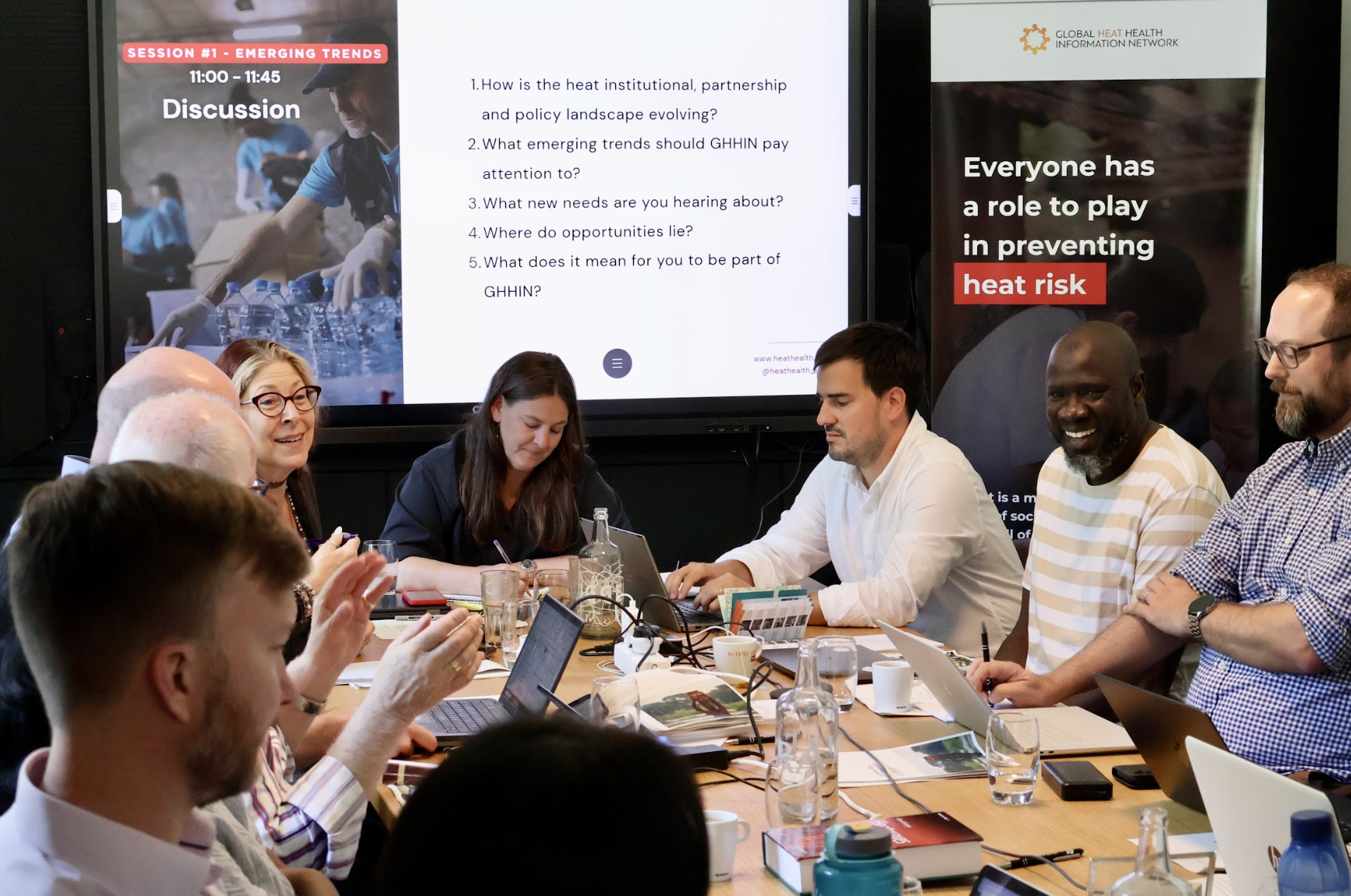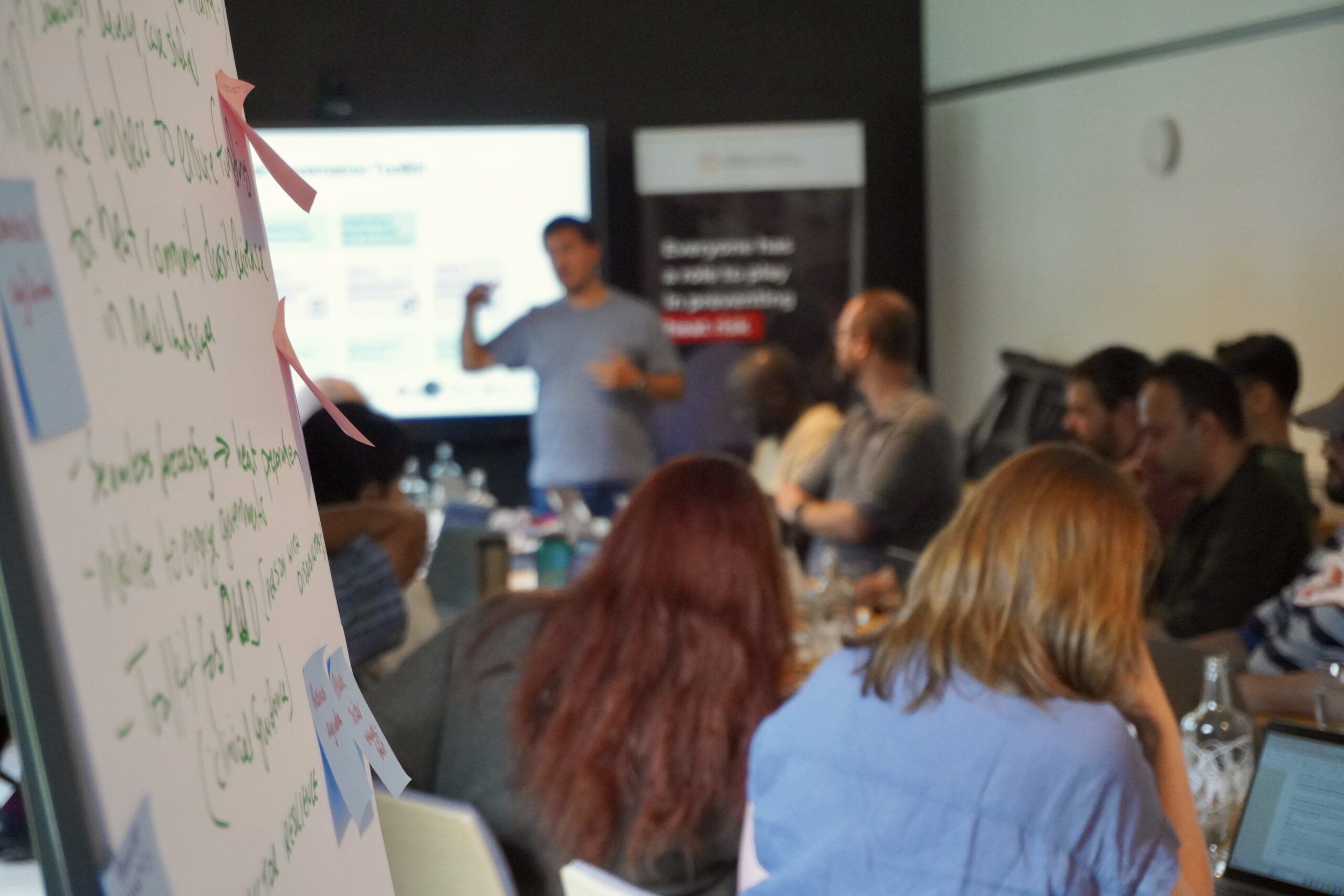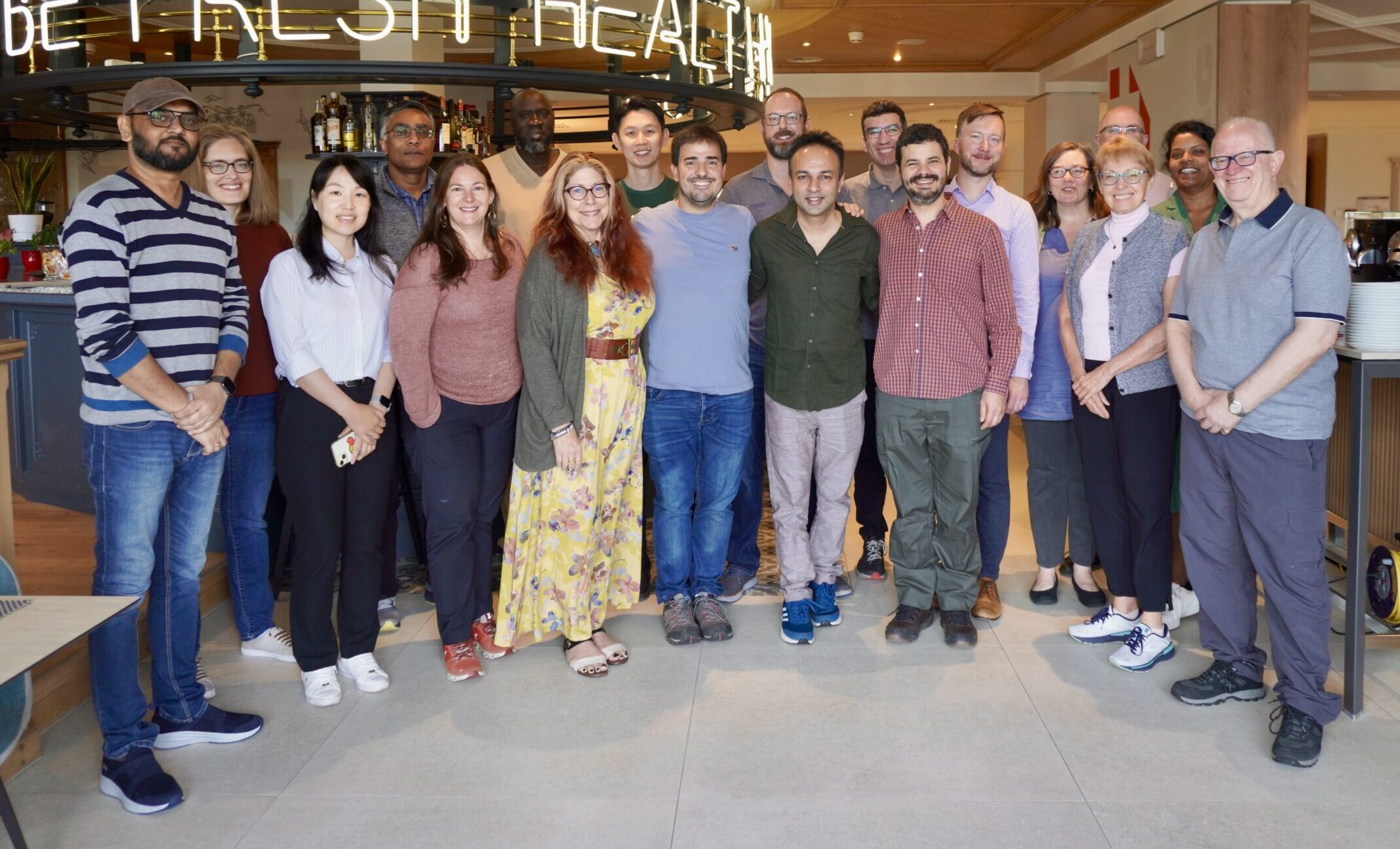Global Heat Experts Chart Strategic Path on Heat and Health
Published: August 16, 2025
Villars-sur-Ollon, Switzerland
During the first week of August, the Global Heat Health Information Network (GHHIN) Management Committee came together to align strategy, strengthen collaboration and advance its mission of ensuring that extreme heat is no barrier to lives and livelihoods worldwide.
As extreme heat continues to escalate as a global health threat, the meeting began with an exploration of major heat and health scientific and policy breakthroughs, institutional considerations and other key trends. The committee reviewed major achievements and progress of the last year, re-evaluated the Network’s strategic directions and priorities, and explored how ongoing plans and initiatives respond to emerging trends. These foundational considerations helped set in motion decisions to strengthen regional and institutional partnerships to enhance the impact of the Network.

Video: Global heat experts chart strategic path on heat and health by the Global Heat Health Information Network
Over four intensive days, priority actions were advanced across several fronts, including:
- Tracking emerging trends: The committee identified key shifts in the global heat health landscape, including misinformation and rapid demand for new information, changing risk perceptions, compounding impacts across sectors, the roles of the private sector and emerging technology, and evolving governance and funding needs.
- Strategic realignment: A review of the Network’s progress and 2025–2030 Strategic Plan led to proposed updates of ongoing core projects and priorities to achieve greater impacts.
- Global Scientific Synthesis Report on Heat and Health: Coordinated by WMO and the University of Washington, lead authors advanced the final phase of report development, with launch date expected mid-2026.
- Knowledge generation and policy tools: Committee members reviewed progress on multiple ongoing projects to develop technical and normative guidance and tools for multiple topics, including: occupational heat stress; indoor heat risk, heat metrics and surveillance, risk governance, and Heat Early Warning Systems, and proposed new synergies and rollout opportunities.
- Heat governance and Early Warning: The committee saw significant progress on steps to support good practices for heat risk governance through cooperation with UNDRR and other UN system partners. Members agreed to continue to scale up engagement with governments and international agencies working toward national and regional engagement and projects that strengthen multi-sectoral technical and policy capacity.
- “What works” platform: The committee discussed the in-depth evidence review on heat interventions that is being coordinated by the University of Sydney’s Heat and Health Research Incubator, and proposed actions to boost the scope and robustness of this database.
- Co-designing the Open Forum series: A refreshed Open Forum format was agreed upon to deepen engagement across sectors and regions, with formats and leads identified to drive the next phase.
- Planning the next Global Heat Health Forum: The committee advanced planning for a major convening to strengthen international collaboration and visibility around extreme heat and health solutions.
- Regional Hubs: Progress by the Southeast Asia Heat Health Hub in Singapore was reviewed, along with the selection process for the South Asia and Americas Hubs, both expected for later this year.
- Communications and Partnerships: Members reviewed the Network’s communications activities and discussed options to better amplify expert voices and showcase partner activities. The new process for adding partners to the Network was also presented.
- Network Management and Governance: Revisions were considered to reflect Network growth, including adjustments to Management Committee operations, alignment with regional steering committees, and new advisory functions.
For Network co-lead Joy Shumake-Guillemot (WHO-WMO Climate and Health Joint Programme), the retreat underscored the dedication of our diverse leadership team: “It’s incredibly valuable to have leading experts step out of their institutional boxes to think collectively about the bigger picture and our collective vision and impact. This is a rare thing that we have in the GHHIN community. Our members are trusted voices with their thumbs on the pulse of this rising risk, and it is so important to have honest, brokered conversations.”
The Network Management Committee represents global expertise from meteorology, public health, physiology, urban planning, climate science, and policy, as well as government, NGO, and academic institutions from Latin America, Africa, South Asia, Southeast Asia, Europe, and North America.

Some members reflected on the unique value of the Network as a convening platform. “In our work we are often trying to advance heat policy in our countries, and sometimes we reach a point where we end up back at ground zero,” noted Abhiyant Tiwari (NRDC India) “But through GHHIN, we hear new ideas, expand connections and have a space to think of ideas together, we are only ever progressing. It also gives us a voice when we go back home and speak with the authority of a Global Network to drive our efforts forward.”
“I appreciate the strategic thinking about positioning the organizations we represent within these global conversations and efforts on heat,” said Swathi Manchikanti (UNICEF), “The drawing of connections helps us understand where we need to be and where we can really contribute.”
“The annual meeting is always an important moment for the Network. Together, we are able to sharpen our strategy, reconnect as a leadership team, identify emerging issues and trends, and align on how we can be more responsive to increasing demand for our expertise and more effective in the face of rising heat risks,” Shumake-Guillemot reflected, “The stakes are high, and our collaboration must rise to meet them.”
With growing global attention on heat as a critical health challenge, the retreat laid the groundwork for the Network to play a more visible, connected, and impactful role both regionally and globally, in the years ahead. Building on this momentum, GHHIN is advancing knowledge and fostering collaboration across sectors and regions, strengthening its role as a trusted platform on heat and health, and inviting new partners to join in shaping this shared agenda.

Participants (L-R): Abhiyant Tiwari, Julie Arrighi, Yoonhee Kim, Shubhayu Saha, Joy Shumake-Guillemot, Ousmane Ndiaye, Juli Trtanj, Jason Lee, Alejandro Saez Reale, Ladd Keith, Roxy Mathew Koll, Gregory Richardson, Francisco Chesini, Hunter Jones, Sari Kovats, Kristie Ebi, Will Lang, Swathi Manchikanti, Glenn McGregor